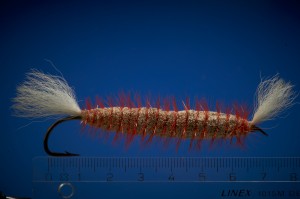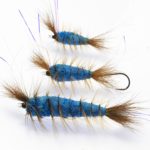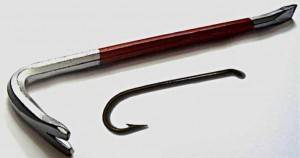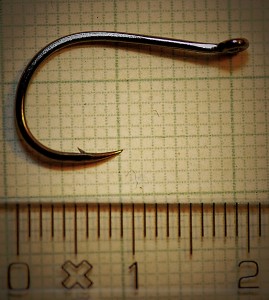- A Fishmadman Newsletter – March/2011
- Tube fly and Waddington history
- The conventional hook – problems with leverage
- Small short shank hooks for tube fly
1930`s The first tube fly
The Idea of having a fly sliding on the line and only having the hook in the mouth of the fish while fighting it – as opposed to a rigid lure – comes from the famous British angler and author; Mr. Alexander Wanless.
Mr Wanless was probably the first to illustrate the sliding-fly system (tube fly) – in his book: The Angler And The Thread Line from 1932…
The first commercial tube fly
The first commercial tube fly was tied around the mid 1940´s and it is a Mrs. W. Morawski working as a professional fly dresser in Aberdeen – Scotland who gets the credit for being the first person tying salmon flies on tube – Mrs Morawski tied her tube fly on a quill (The hollow shaft of a feather)
The first tube fly: Mr Wanless was the first to illustrate the sliding-fly system (the tube fly) Here a wonderful colour plate from Mr. Wanless book The Angler And The Thread Line (1932) showing the Thread Line lures. Flies designed by Mr. Wanless to be used with his light-spinning equipmentSee another colour plate from this book
1940´s the end of the long shank hook
Leverage was definitely a problem to the Victorian angler who must have struggled to keep the salmon hooked on the big single hooks they used.
Left: a examples of such giants used early in the season A # 10/0 Grey Eagle Spey fly and a # 10/0 Mar Lodge. These huge single hooks quickly disappeared from the fly box when innovative anglers started making patterns on tube and so-called Waddington Shanks. Flies in picture tied by Redpath & Co. Kelson-On-Tweed
The Waddington shank – The tube fly brother
Mr. Richard Waddington, 1910 – 1999 Great British angler and author – who made a clear analysis of the leverage problem associated with big single hooks – Designed a system of; parallel wires supporting a small trailing treble. System known as: the Waddington Shank
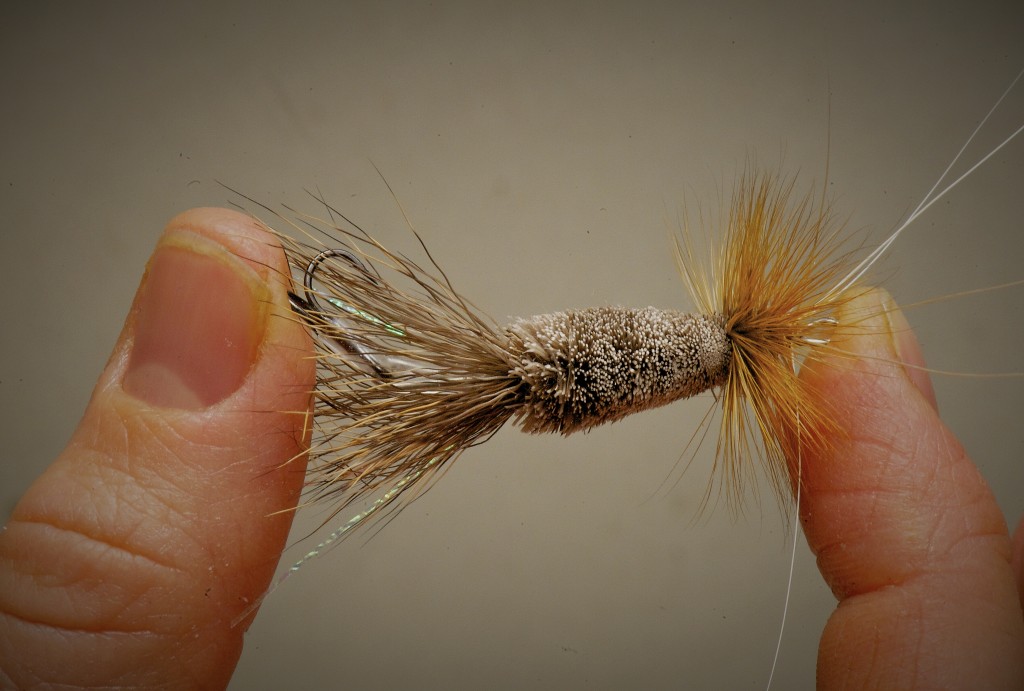
Right: a version of the Monster Tube Caddis ™ we did on a lightweight Waddington Shank… made from thin stainless steel wire, with a soft tube hook guard to keep the hook facing straight. Note how it will flex easily in the link between hook and shank – hereby reducing the fishes chance of using the big fly as a wedge…
Hook-up on dry fly and the choice of hooks for tube fly
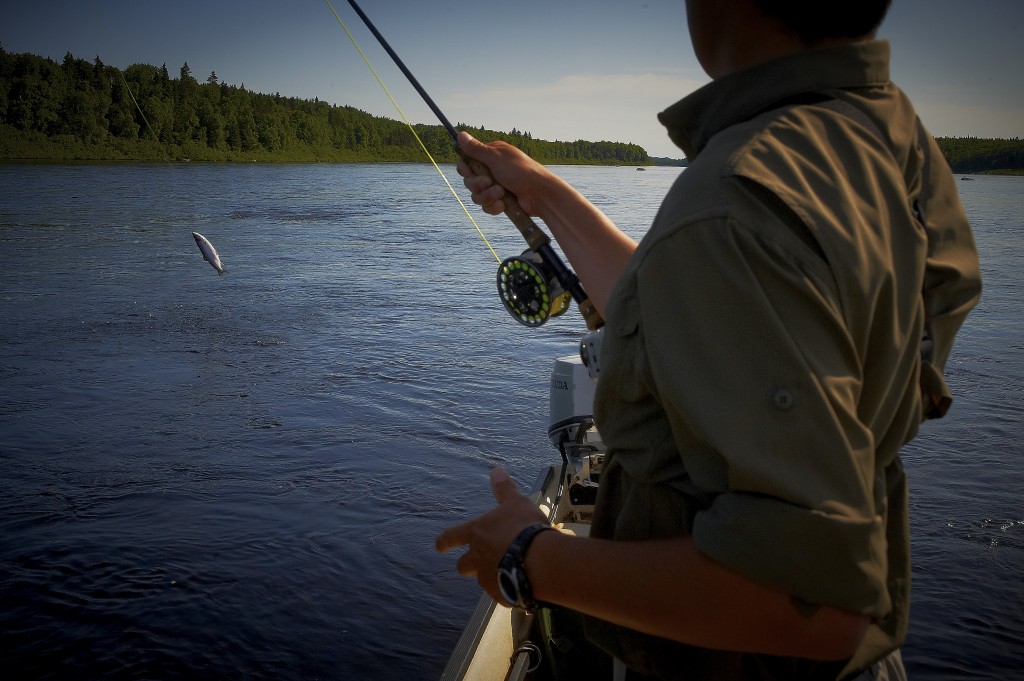
Summer grills doing its best to break free of the hook hold – The Grills for one has a notorious ability to shake loose – often because fighting grills… quickly becomes a close combat scenery
 The salmon emerges from the deep to grab your dry fly…
The salmon emerges from the deep to grab your dry fly…
Not always successful the angler may be left fish-less with technical questions boggling his mind. Hook-up is a phenomenon within our sport, and complex sketches in almost every book on game fishing will aid the angler to perceive the way of the take
While the angler with the sub-surface fly have been educated how – not to strike. The dry fly angler will have to set the hook as soon as the salmon hits the fly – and the hook will have to find its hold within those precious fractions of a second.
This is rarely an easy task as salmon dry flies often are bulky or big or both. The fly might hook the salmon in the skin of the mouth or hook it by penetrating the tongue or even the jawbone and anglers will on a whole have to depend on: a hook that is physically clear of the fly and a great deal of luck.
The standard dry fly hook
The conventional salmon dry fly is often tied on a 2 X streamer or a low-water salmon hooks # 8 – 1/0 or even bigger. Hooks like these are made from relatively heavy wire that will need some force to connect with the jaws of the fish…and the angler will have a hard time setting the hook on a long line. Ones hooked on a fly tied on a long shank hook the salmon can break free from its hook-hold using the hook as a lever…
Above: A Bomber we bought at a fly shop in Newfoundland… Made for big Atlantic Salmon on a giant hook (maybe 4/0) – Probably A nightmare to cast with and disastrous to hook a fish on.Small hooks work!
We have trough the years worked with a range of hook-manufactures to find the hooks that do best with our tube fly system.
The small single hooks we favour are various coarse-fishing hooks that originally were designed to endure tough fish like; carp and river barbel where the method of hook & hold now and then is required.
Needles to say these hooks will also take the strain from salmon and steelhead
The perfect tube fly hook
These hooks are made from super quality wire often with a relatively short shank, with superior hook point strength and some hooks are even slightly kirbede just adding further hook-ability.
These high-end coarse hooks are already intended for catch & Release either barb-less or fitted with a diminutive barb – leaving insignificant damage to the salmon.
With the small hooks we use on our dry flies we aim to hook the salmon in the skin – inside the mouth or in the outer rim of the mouth as an alternative to going around the jaw or even penetrating the jawbone…
Hook in photo Owner Chinu 1/0 Short shank a hook for bigger tube flySee our page on hooks
Headlines on small hooks used with a tube fly
- You need less force to set a tiny hook
- The small hooks and micro barbs causes less damage to the fish
- A short-shank hook in a tube does not instigate problems with leverage
- Hook will be at the rear of the fly and physically free of the bulky body of the fly

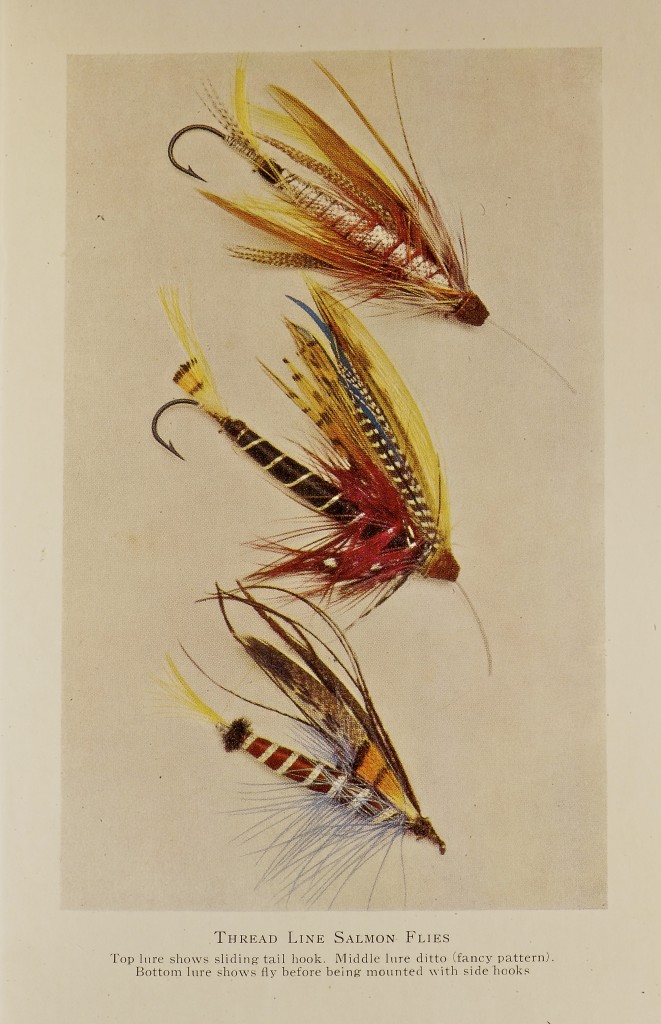
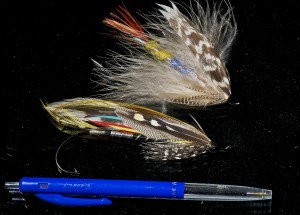
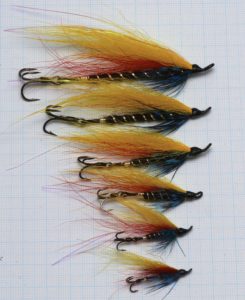
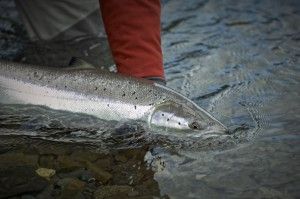 The salmon emerges from the deep to grab your dry fly…
The salmon emerges from the deep to grab your dry fly…